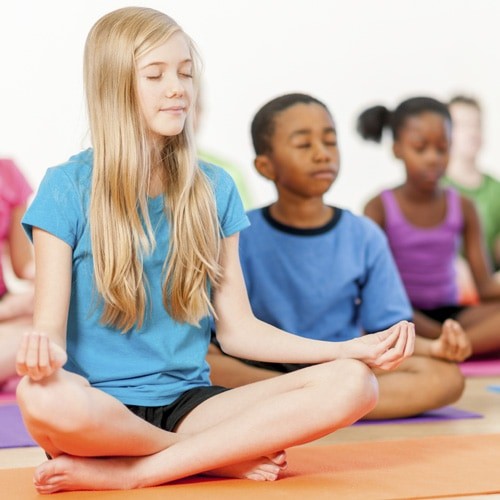You’ve probably perused your share of self-help and transformational growth books in the past few months since personal growth is one of the top booming industries
today. As adults, we spend a lot of time soul searching for inner peace and trying to design our lives against the stress of modern times.
Imagine if you got started with these practices as a child.
With over 30% of teenagers living with anxiety and the median age of anxiety onset being six years old, it’s more important now than ever to encourage children to practice mindfulness and do mindset work.
Teaching them how to be self-aware of their emotions and to manage them early on can maximize chances of raising children that will be successful at working through intense emotions, which will help them as they grow through different stages of their lives.
Here are three growth mindset activities that your kids can use:
Meditation for Kids
Fun fact: It’s easier for kids to meditate than it is for adults to meditate.

When most adults start meditating, they are filled with preconceived beliefs on what meditation should be.
Remove all thoughts!
Am I thinking right now? Oh man, I’m thinking about thinking right now.
I can’t do this, I can’t do this, I can’t do this.
Kids aren’t conditioned to know what meditation is “supposed” to feel like which removes expectations of doing it right or wrong.
Meditation gives children space to have a moment of stillness and calm, especially in the busy world they live in. Children are often watching tv, playing with electronics, getting bombarded with ads, and joining parents for errands. If they go to school, they’re interacting with multiple people per day, on top of trying to learn, do homework, and maintain social standing.
At the end of the day, you’re probably exhausted from the constant stimulation of everyday life, which may lead to aggression, short temper, and frustration. Children aren’t immune to these feelings so next time they’re “acting out” or having a meltdown, give them a moment of pause.
A Baltimore school adopted a meditation room instead of punishing students for misbehavior and they went a whole year without a single detention!
Meditation can happen in various ways. Some options for your children to get started are:
Pomodoro Method for Kids
Young children don’t have a sense of time the way adults do.
But let’s be honest, do adults really have great sense of time? How many times have you told someone you’d be there in “5 minutes” knowing that you
just rolled out of bed?
For kids, time is vague. Minutes, hours, even days are considered “long” or “short” depending on how the child is feeling.
Asking a child to spend 5 minutes cleaning up their toys can lead to anxiety or even protest because to them, you just asked them to spend the rest of their life cleaning.
On the same note, a child may feel that 1 hour at the park is only a few seconds.
Giving children a measurable way to tell time helps them focus on the task at hand because they know how much time they have left. They simply need to wait for the timer to hit zero and they can move on to the next task.
Visual timers are the best for kids who don’t have the ability to add or subtract time on their own. Set the timer for anything, from trips to the grocery store (how long until we get there?) to quiet reading time (this book is taking FOREVER).
If you have a chore or specific task your child needs to do, you can set the timer for 25-minute increments of focus and then add a 5-10 minute break in between. This teaches your child distraction-free focus and allows them to concentrate on what they need to do until the timer rings.
Brain Dumping
You know that oh crap moment when you realize you have a thousand things to do, half of it isn’t even written down, and the other half has been pushed back so far you know it won’t get done on time?
Enter the panic attack and a full-on breakdown.
While most kids don’t have to worry about bills, a frustrating boss, or saving for retirement, they still have pressures and overwhelm. Children are also prone to panic attacks if they’re pushed over the edge.
Brain dumping is a great way to get everything out of mind.
A few ways you can give your children space to brain dump:
- Allow them to ramble. You can set aside time during family meals to sit down and let everyone share their day or simply put the phone down and listen if your children come to you with a 10-minute long story.
- Give your child a prompted journal or blank book that they can write or draw in.
- Practice dumping and releasing. Let your child write their stresses on a piece of paper and throw it out as a way to symbolize letting go of the pressure.
Which mindset activities can you incorporate with your children?
Let me know in the comments below if you’d like to try one of the techniques above or if you already have mindset activities you’re sharing with your children.
This post comes from the TODAY Parenting Team community, where all members are welcome to post and discuss parenting solutions. Learn more and join us! Because we're all in this together.
